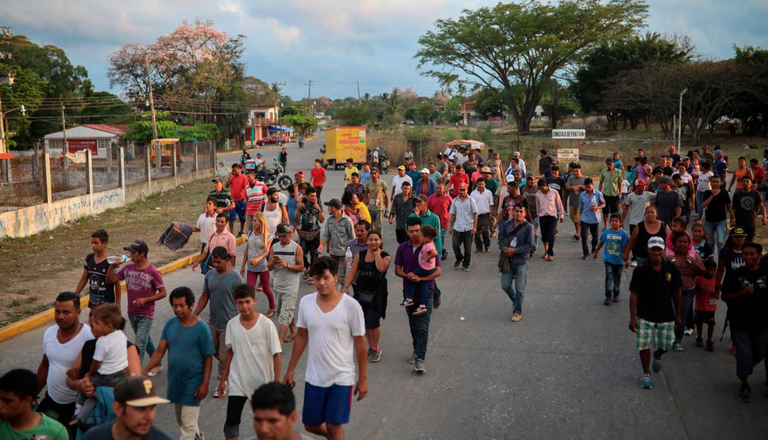CommentsVOICES-Whether or not Donald Trump continues in office in the near future, he has already contributed to a language of immigration that’s both larger than him and that will outlast him.
The language is spoken by members of the Trump administration and its allies in the media and in restrictionist think tanks. Grounded in a narrative of threat from within and without, it’s a language that sanctions and rationalizes violence against immigrants. For convenience’s sake, I’ll call it “immigrationspeak.”
Immigrationspeak ranges in register from the inflammatory to the cool. Inflammatory language has been central to Donald Trump’s rhetoric since the day he announced his candidacy, declaring that Mexico is “. . . sending people that have lots of problems, and they’re bringing those problems with us. They’re bringing drugs. They’re bringing crime. They’re rapists. And some, I assume, are good people.” Since then he has continued to frame an incendiary narrative of menace, tweeting on several occasions that caravans of Central American migrants constituted “invasions” of the U.S. border.
Trump isn’t the only one to contribute significantly to a narrative of menace. Often in the cooler language of policy analysis, think tanks like the Federation for American Immigration Reform (FAIR) and NumbersUSA have been depicting a wide range of threats – to the environment, to Americans’ jobs and safety, to the economy in general – that can only be countered by substantial restrictions on immigration.
By itself, a narrative of threat won’t advance an immigration agenda as ambitious as this administration’s. Immigrationspeak requires a veneer of legality, a vocabulary of criminalization, to move its agenda forward. Within five days of Trump’s inauguration, the White House issued an executive order, “Enhancing Public Safety in the Interior of the United States,” that rescinded Obama-era enforcement priorities focusing principally on undocumented persons who committed violent crimes. By removing these priorities, the Trump administration widened the net of potential enforcement to all of the 10.7 million people living in the U.S. without documentation. How to label these persons? “Removable aliens.”
Lest there was any ambiguity about the change, the then-Acting Director of ICE, Thomas D. Homan, stated at a hearing in Washington, “If you’re in this country illegally, and you committed a crime by entering this country, you should be uncomfortable. You should look over your shoulder.” Soon after the issuance of the executive order, the administration began sweeping people up in ICE raids: a restaurant worker and father of four, an evangelical Guatemalan minister, a student activist. These were people I knew, or came to know, in my own community in Los Angeles. Similar apprehensions were occurring all over the country.
But interior enforcement is just one part of a vast picture, and legalistic language just one instrument in the immigrationspeak toolbox. Falsehood, denial, and a faux humanitarianism play significant roles too, particularly in advancing a policy of aggressive deterrence at the border. When the administration provoked outrage last year by separating migrant children from their parents, by incarcerating children in cages, and by denying them basic necessities like soap, toothbrushes, or beds, administrative spokespersons like former Homeland Security Secretary Kirstjen Nielsen argued that the children were being used by smugglers and traffickers to get into the country illegally. As she attempted to explain, “we are trying to protect the children, which is why I’m asking Congress to act. We are a country of compassion. We are a country of heart.”
As these tools haven’t succeeded in quelling outrage, the administration has turned to other devices. Silence and secrecy also play their role, as when journalists and other observers are denied access to the new “tent courts” set up at the border to expedite hearings for asylum seekers stuck in Mexico under the administration’s controversial “Remain in Mexico” policy. Fences, locked gates, and barbed wire also constitute a language of their own.
One can only assume that the current administration would like to see immigrationspeak become a lingua franca: a common way of speaking, thinking, and writing about immigration. But America remains a stubbornly multilingual nation. Dialects of defiance and resistance haven’t been suppressed. I recently attended an immigration rights rally in Los Angeles, where a young woman, one of the organizers of the event, got up and said: “I may not be able to vote, but that won’t stop me from getting out the vote. I am undocumented, but that won’t stop me from continuing to speak out and organize.”
(Andrew Moss is a CityWatch contributor syndicated by PeaceVoice. He is an emeritus professor (English, Nonviolence Studies) at the California State Polytechnic University, Pomona.)
-cw
















